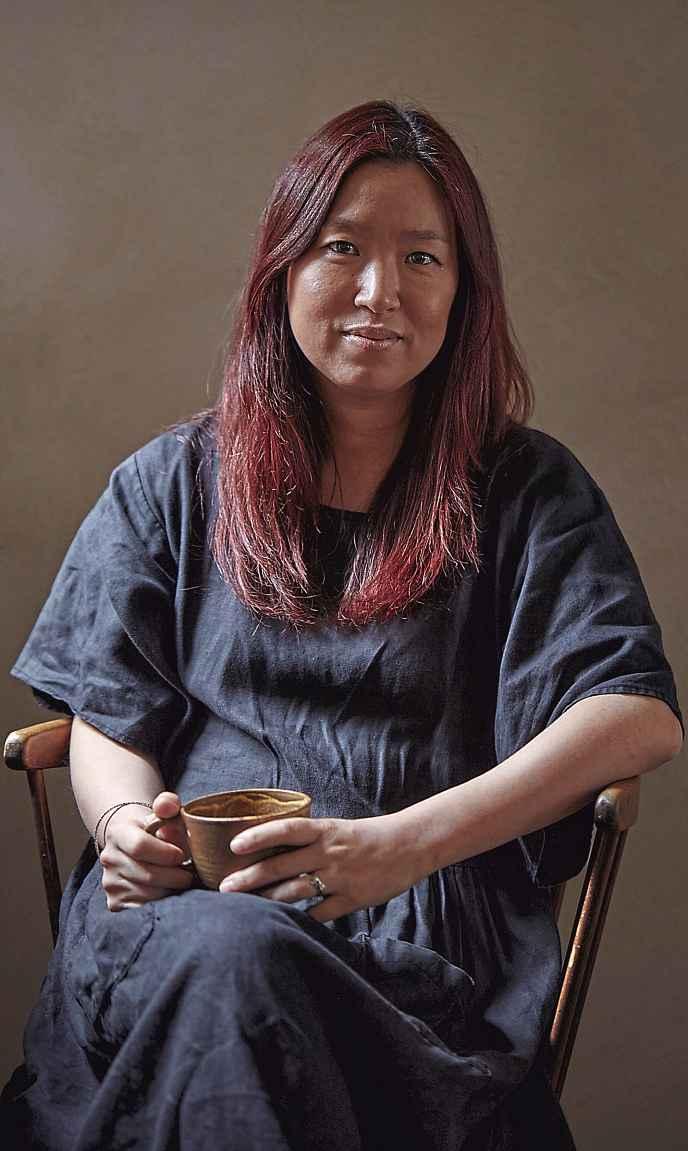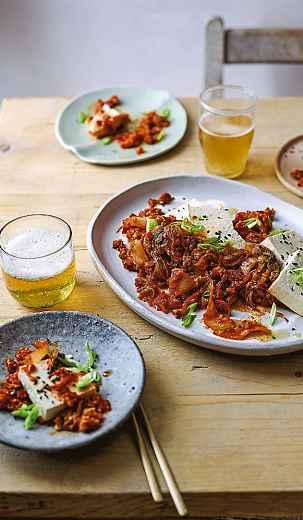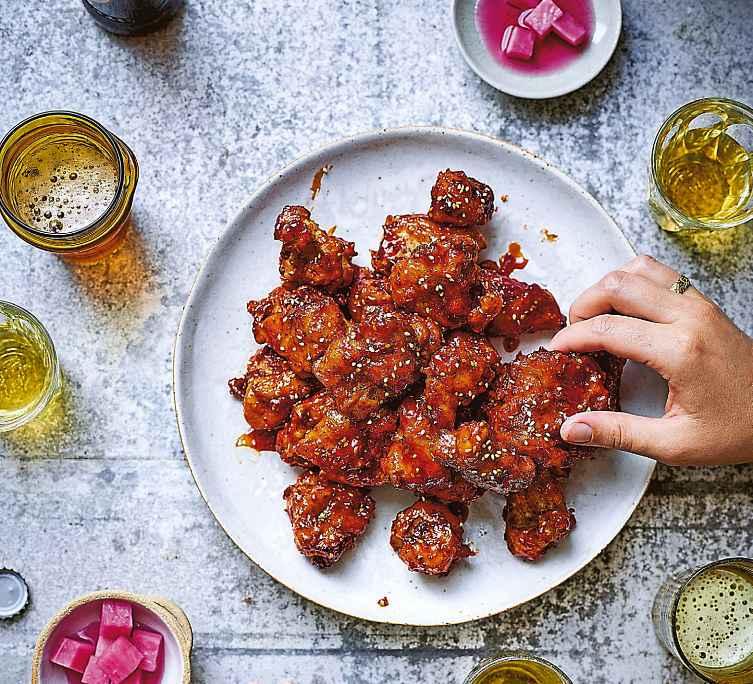
4 minute read
DISCOVER ATASTE FOR KOREAN CUISINE
Food Writer Su Scott Talks To Prudence Wade About Rediscovering Her Culture Through Cooking
SuScott says her worldstarted to “collapse” after giving birth to her first child.
“It sounds dramatic, but when my daughter was born, it was like wow,I have this child, there is aresponsibility to keep this newborn alive,” she remembers, with the added pressure of being “the sole bearer of the culture as an immigrant mum”.
Scott moved from Seoul to London when she was 19, and her half-Korean daughter,Kiki, is now eight.
Now 42, Scott has spent most of her adult life in the UK, and she remembers: “Asanimmigrant living in theUK, trying to embrace the culture and immerse myself into it, Ilost the sense of who Iam. Having my daughter made me question my identity
“Cooking Korean food felt like the most immediate, tangible thingIcould reach out to, to makesome sense of who Iwas.”
Not that it was necessarily this easy “The whole process went on for along time, it crept up slowly but surely,” she says.
“It didn’t take me long to realise that my world was collapsing in front of me. Ididn’t know how to put it together. I knew I’d have to dig deep.”
Scott calls it a“hard” and “lonely” experience, but says it was “very rewarding, because you come out the other side knowing exactly who you are”.
She used food as away to reconnect with her homeland, but suggests its importance isn’t uniquely Korean.
“It’s not just my culture –Ithink food is such an integral part of human living. What we often forget is how thesmall things from our ordinary days can make up such apowerful part of who we are,” she says.
When embarking on this journey, there were two dishes from her childhood Scott wanted to try.
“The thing Ireally wanted to recreate and eat was bone broth,” shesays, lighting up at the memory
“When Ithink about my childhood, there’s this powerful moment of smell,” says Scott. “There’s this onespecific memory of my father sourcing thegood meat bones, and my mother preparing the broth for days on end.
“The whole house would smell of bones. It’s not anasty smell, but it’s not overly pleasant either.It’s the dish I absolutely hated as achild, but it’s also the one Ifelt so loved with.”
Scott was initially too scared to make it herself –incase it tainted her memories –but now she says “it has got another story to it”, and shemakes it every winter for her daughter.And no, it doesn’t taste like her mother’s –but shesays that’s “a good thing in away”.
The other dish that “really connected me to the Korean food of my childhood was kimchi stew”, Scott says. She started cobbling together theingredients for this dish without really thinking about what she was doing, and felt a“moment of euphoria” when it all cametogether

“This is the taste of home,” shesays. “Making this dish taughtmesomuch about how Icould reconnect to my culture, my heritage and myself
“I needed to find the person Iwas when Iwas in Korea, in order to make sense of who Iamnow,as amother.”
Korean food has morevisibility on the world stage than ever before, with Scott saying: “It’s so exciting, isn’t it? I never,ever imagined that Iwould see ajar
Tofu with buttered kimchi –serves4
“Dubu kimchi is made up of two parts: poached tofu and stir-fried kimchi. It is often served as anju, aKorean wordthat means ‘drinking food’,” Su explains.
Ingredients
1tbsp vegetable oil
½ onion, thinly sliced
200g minced pork
½tsp freshly cracked black pepper
20g unsalted butter
2garlic cloves, minced
350g overripe kimchi, roughly chopped
2tsp golden granulated sugar
1tbsp mirin
1½tbsp gochugaru (Korean redpepper flakes)
1tbsp soysauce
200g tinned chopped tomatoes
396g block of firm tofu
Sea salt flakes
To finish
1tbsp toasted sesame oil of kimchi in anormal supermarket.It’s amazing. Ithink Korean food has still got along way to go in the UK, though. The range is very limited.”
That’s why Scottwants to highlight everyday Korean dishes in her debut cookbook, Rice Table.

“When you talk about Korean food
½tsp toasted white sesame seeds
1springonion,thinly sliced
Pinch of black sesame seeds
Method
1. Heat the oil in alarge sauté pan. Add the onion with apinch of salt and fry for two minutes to soften. When the onion is starting to smell fragrant, add the pork and the cracked black pepper and stir frequently for 8-10 minutes until lightly browned. It should be golden brownincolour with an almost sweet, caramelising smell.
2. Lowerthe heat and melt in the butter with the garlic, then add the kimchi, sugar, mirin and gochugaru. Giveita good stir to combine the ingredients, then sauté gently for fiveminutes, stirring occasionally. Make surenot to burn the gochugaru. We arenot heretocaramelise the kimchi, rather to soften it slowly in luscious fat.
3. After fiveminutes, your pan should look alittle drier than when you started to fry the kimchi. Stir in the soysauce,ensuring it is with other people, they talk about bulgogi and bibimbap. Of course, these are wonderful dishes that champion Korean cuisine, buttheyare only afraction of what we offer,” she says.
“I wanted to champion the daily home cooking of Korean culture. Iwanted to champion all the mothers and their labours –that’s not necessarily always celebrated.”
Abig part of this –and what makes up the first chapter in the book –isbanchan culture.
“It’s the small-plate dishes,” Scott explains. “When you Google ‘banchan’, a lot of websites will tell you it’s aside dish” –somethingthat “really bugged” her Banchan dishes in the book include tofu with buttered kimchi, stir-fried fishcakes with green peppers, soy sauceglazed aubergines, and spring onion pancakes.
“Individually they are delicious, they each have aplace in their own right. It’s abit sad to call them side dishes, isn’t it?”










